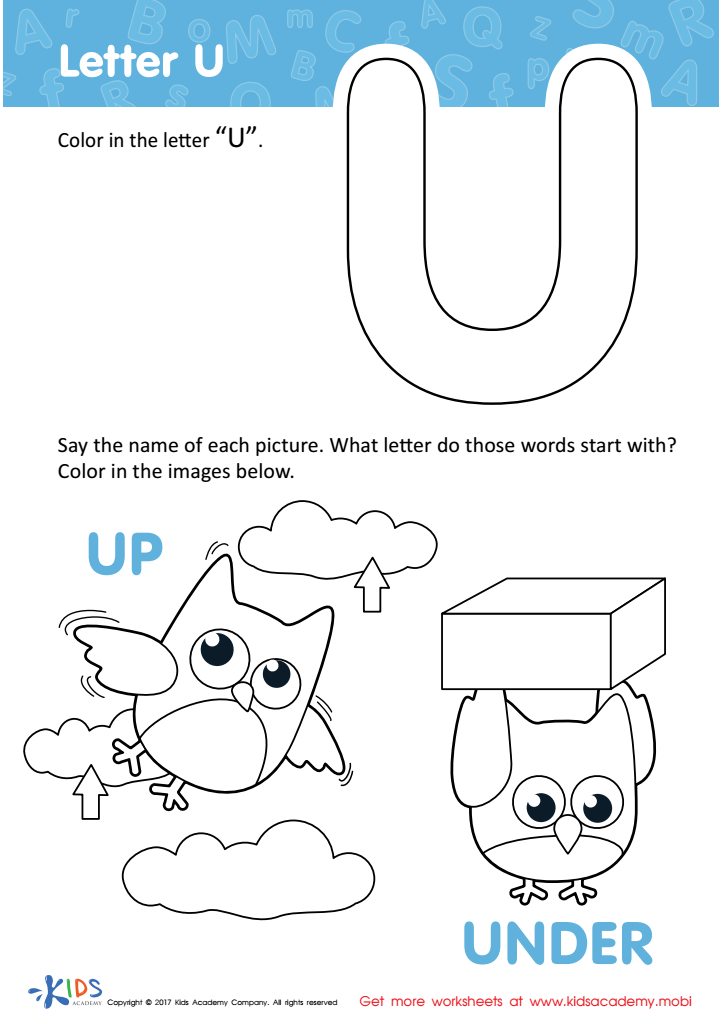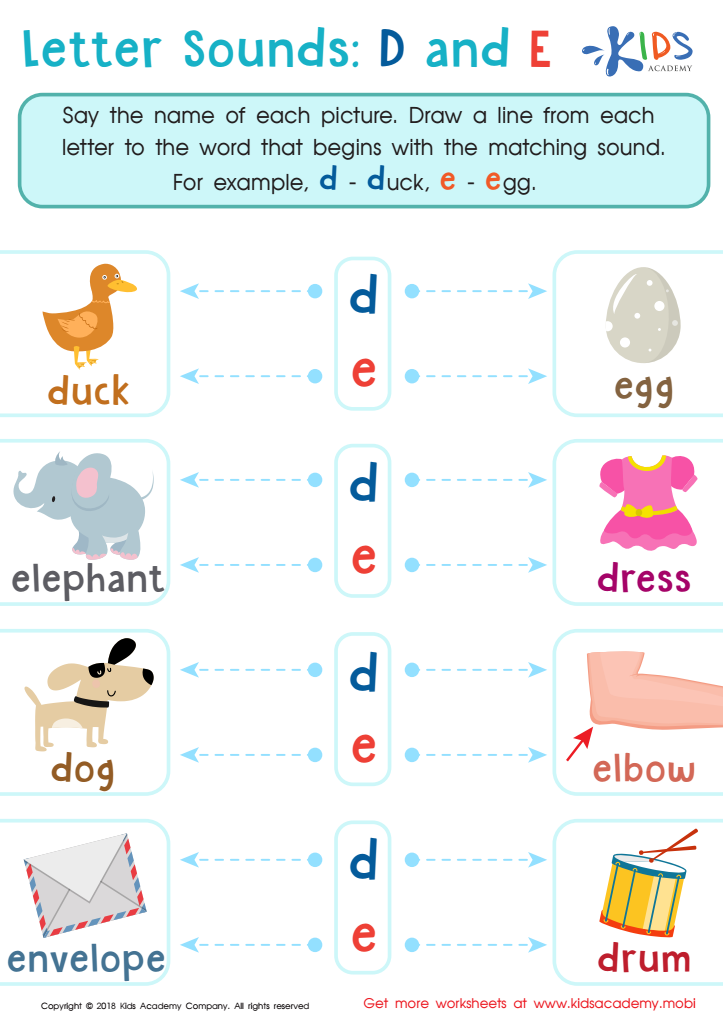Phonetics understanding Alphabet Worksheets for Ages 3-8
4 filtered results
-
From - To
Unlock the joy of learning with our Phonetics Understanding Alphabet Worksheets designed for children aged 3-8! These engaging worksheets introduce young learners to the essential sounds of letters, fostering phonemic awareness and early literacy skills. Each activity is tailored to make phonetics enjoyable, using colorful visuals and interactive exercises that capture children’s attention. As children explore letter sounds, they will enhance their vocabulary and develop critical reading skills. Perfect for homeschooling or classroom use, our resources encourage kids to build a strong foundation for lifelong learning. Start your child’s phonetic journey today with our fun and educational worksheets!


Letter U Coloring Sheet


Letter U Sounds Worksheet


Rhyming Words Worksheet


Letter D and E Sounds Worksheet
Understanding phonetics and the alphabet is crucial for children aged 3-8 as it lays the foundational skills necessary for reading and writing. Phonetics involves the relationship between sounds and their corresponding letters, which helps children comprehend that letters represent specific sounds. This understanding enhances phonemic awareness, enabling them to decode words while reading and spell them accurately.
When parents and teachers care about phonetics, they can encourage children to blend sounds to form words; for instance, recognizing that the sounds /b/, /a/, and /t/ come together to form “bat.” This skill fosters confidence and enhances fluency as children progress in their literacy journey. Moreover, engaging in phonetic learning can make reading a fun and interactive experience, using songs, rhymes, or games that focus on sounds and letters.
Additionally, mastering phonetics promotes critical thinking and cognitive development. It encourages children to manipulate sounds and explore language creatively. Therefore, prioritizing phonetic understanding equips children with essential tools for academic success and fosters a love for learning. For parents and teachers, supporting this foundational skill can profoundly impact a child’s literacy development, setting them on a path to lifelong learning and communication.
 Assign to My Students
Assign to My Students



















